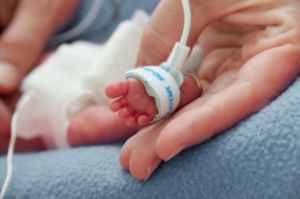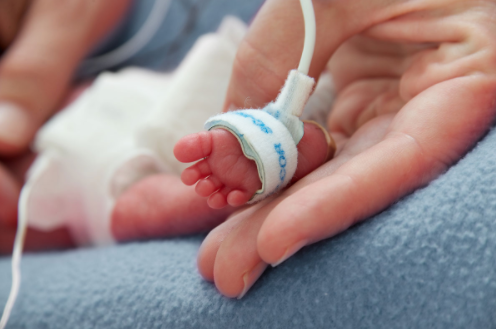We will focus this week on what the baby goes through once they are brought in to a hospital. Please note that the status of the baby or young toddler that had experienced heat stroke may differ from each other.
Stabilization: clinician will immediately assess what has to be done first to the patient once the baby is first entered into the hospital. Procedures include support of airway, breathing, and a check on circulation. In most common cases, the patient is either unconscious or unable to breathe on own. Hospital will use the process of endotracheal intubation where the doctor will give anesthesia first, and then insert a plastic tube into the patient’s trachea to help with breathing.
Rapid cooling: water immersion is one of the most common cooling methods given in hospitals as the goal is to lower the core temperature rate of 32.18 ̊ F or 0.1 ̊ C per minute. IV fluids will also be given to reduce shivering of patient as it is common for them to have this effect during cooling.
Reducing of Rhabdomyolysis (death of muscle cells entering into the blood stream) can be carried out with “volume expansion with normal saline, IV frusemide, mannitol and sodium bicarbonate”, or in simple terms: fluids and electrolytes. As discussed in prior posts, an increase in Rhabdomyolysis level can inhibit normal functions of the kidney and liver which may lead to both major organs to fail.
Treatment for multi-organ failure due to heat stroke: Along with cold immersion to lower body temperature, hospitals will also use ventilator for breathing, blood transfusion if appropriate to bring new blood to the patient. In some cases, liver transplants are necessary for severe liver failure. If successful, some cases have shown that patient will recover after hospitalization two to four weeks, including rest. However, this does not include secondary symptoms associated with cerebellar dysfunction or Permanent Cerebellar Syndrome as it will take years of therapy and many babies or young toddlers may not fully recover.
There were numerous cases when the baby or the young toddler has been admitted to the hospital, as the major organs have already been damaged, they did not survive or live through the ordeal. If the baby or young toddler does survive, the parent will have to endure years of therapy, time, expenses, and the stress to try to have them recover knowing fully they may not recover back to 100% of what they used to be! According to a study, the morbidity and mortality rate of heat stroke is 80% if hospitalization is delayed! Therefore, we should never let our guard down when it comes to the safety of our babies and young toddlers!
Cerebellar Dysfunction:
loss of speech or unclear articulation of speech, brain tumor, bleeding in the cerebellum area of the brain (part of brain that is responsible for movement, senses, and learning motor behaviors).
Permanent Cerebellar Syndrome: problems related to gait (imbalance, shuffling, frequent
falls, staggering, and unable to move), co-ordination, speech, visual, and vertigo problems (feels like everything is spinning around you).
Text:
- www.uptodate.com/contents/heat-stroke-in-children
- www.ncbi.nlm.nih.gov/pmc/articles/PMC4923787/
- www.ncbi.nlm.nih.gov/pmc/articles/PMC6956553/
Pic:
www.uichildrens.org/medical-services/neonatolog


